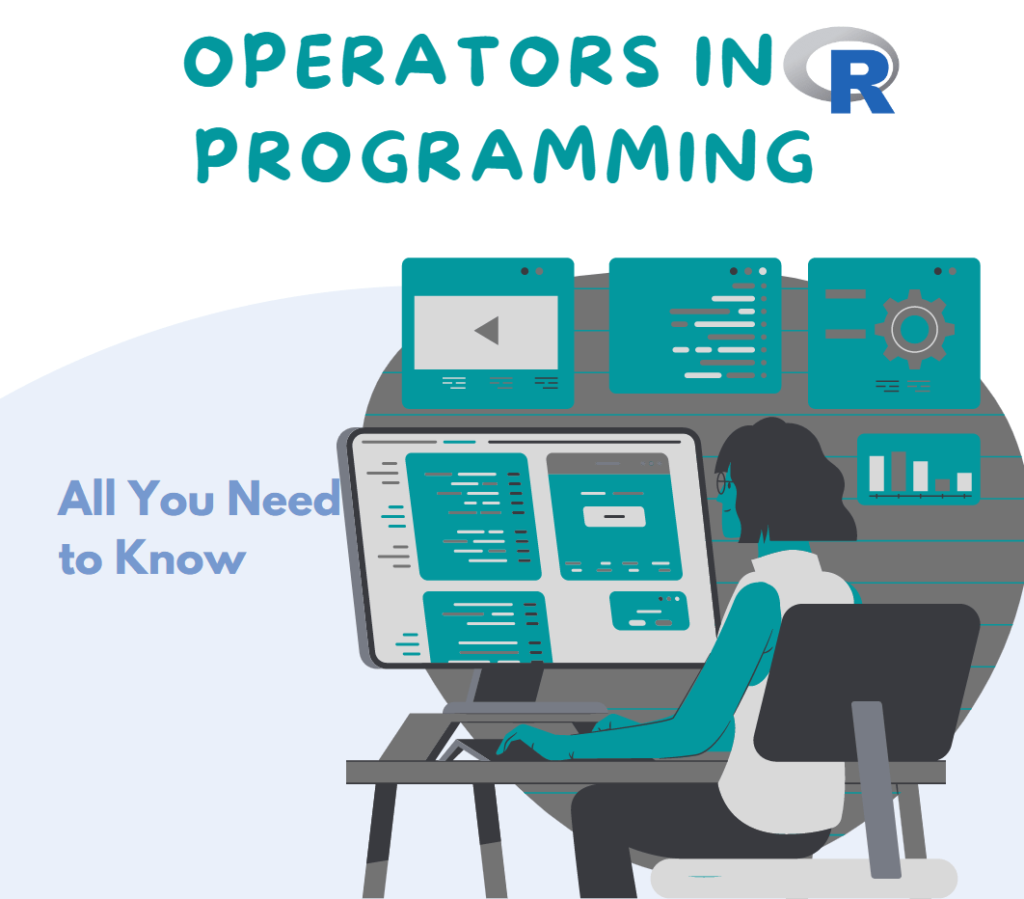Be it a graphical presentation or statistical computing, R is the most used programming language, extensively. It is a powerful and open-source language that makes analyzing data simpler for programmers and developers. It has a simple syntax and everyone who has a good understanding of data can work with R, which makes it ideal for beginners to try it. Many beginners are trying to have a strong grip on R to become a pro. Even if beginners have no experience with coding and compiling can also work on it, practice is just the requirement. There are a lot of projects that beginners can try to work on. When working with operators in R programming, you need to know a lot about it.
In R, operators are essential when you want to perform or work on mathematical expressions. I would like to explain the R operators as when I was learning, I messed with the codes and ended up with issues in return. So, I would like to help beginners understand operators in detail.
Different Operators in R
Operators are used to perform various mathematical operations between operands. R is quite rich in operators that are inbuilt. There are different operators that are mostly used in the R:
Arithmetic operators
As the name suggests, these operators are used to perform arithmetic operations like addition, subtraction, multiplication, division, modulus, exponent, and integer division. For every operation, there are different symbols:
- Addition operator – use (+)
- Subtraction operator – use (-)
- Multiplication operator – use (*)
- Division operator – use (/)
- Modulus operator – use (%%)
- Exponent operator – use (^)
- Integer division operator – use (%/%)
When you perform the arithmetic operation, use these operators.
Logical operators
To perform the Boolean operation, you need to use logical operators like AND, OR. In R, logical operators work for logical, complex, and numeric purposes only. Have a look at the logical operators used for such operations:
- AND operator – use (&). Based on the first and second elements, it returns the result in either TRUE or False.
- OR operator – use (|). It also returns TRUE or FALSE if one out is available.
- NOT operator – use (!). It returns the inverse of all the elements on which it is used.
- Logic AND operator – use (&&). It shows True if both the elements are TRUE, and the same goes for the FALSE case.
- Logic OR operator – use (||). It shows the output as TRUE if one of the elements is TRUE, and the same goes for the FALSE case.
Assignment operators
Assignment operators are used when you have to assign value to vectors. Check out the symbol of the assignment operators:
- Rightward operators – use ->, ->>
- Leftward operators – use <-, <<-, =
Relational operators
It operates just like its name, relational. It shows the relation between two assigned values or a comparison between two operands or two values. Have a look at the symbols:
- Greater than operator – use (>). It returns TRUE for the first vector element that is greater than the second vector.
- Less than operator – use (<). It shows TRUE for the first vector element if it’s less than the second one.
- Greater than or Equal to– use (>=). It returns TRUE if the element in the first vector is greater or equal to the second one.
- Less than or Equal to – use (<=). It returns TRUE if the element in the first vector is less than or equal to the second one.
- Equal to – use (==). It outputs TRUE if the first vector’s element is equal to the second.
- Not Equal to – use (!=). It shows TRUE if the first vector’s element is not equal to the second.
Conclusion
And that’s how you can use the operators in R. It seems simple, but the practice is necessary to keep using operators smoothly.
